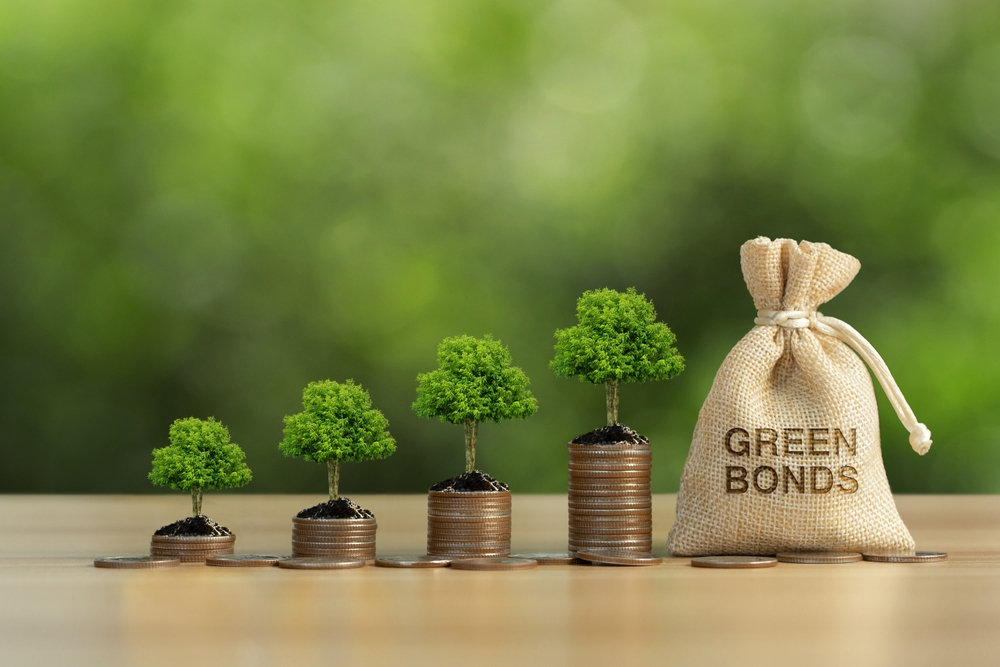Green bonds are fixed-income instruments designed to support environmentally friendly projects. They allow investors to put their money toward climate solutions and help mitigate the impacts of climate change. Over the past decade, green bonds have grown exponentially, demonstrating strong investor appetite for sustainable investments. This article explores the growth of green bonds, how they work, and their potential to accelerate the clean energy transition.
The Rise of Green Bonds
Green bonds were first introduced in 2007 but grew slowly during their initial years. However, over the past decade they have seen explosive growth. According to the Climate Bonds Initiative, the total issuance of green bonds in 2021 reached $269 billion, a 48% increase over 2020 levels. Some key milestones in the development of the market include:
– The World Bank issued the first labeled green bond in 2008 for $150 million.
– In 2013-2014, issuance grew significantly as larger corporations and municipalities entered the market. Total issuance surpassed $10 billion annually.
– 2015-2016 saw further growth as governments and agencies joined as issuers. Yearly issuance crossed $40 billion.
– 2017 marked a milestone as annual green bond issuance surpassed $100 billion for the first time.
– Between 2018-2021, issuance has grown by over 50% each year on average, reaching over $250 billion annually in recent years.
This tremendous growth clearly demonstrates increasing investor demand as well as issuer interest in financing solutions to combat climate change. It illustrates how green bonds are playing an important role in channeling private capital into sustainable projects worldwide.
How Green Bonds Work
Green bonds are structured similarly to conventional fixed-income bonds but have an added designation making clear the link to environmentally focused projects. The key steps in a typical green bond issuance are:
– An issuer such as a bank, corporation or government issues bonds earmarking the proceeds for green or climate-aligned expenditures.
– The bonds are verified by a second party opinion provider to follow industry standards and guidelines.
– Projects supported can include renewable energy, energy efficiency, pollution prevention, green buildings, sustainable water, or land use.
– Investors purchase the bonds at issuance based on the financial return without direct exposure to the underlying projects.
– Proceeds are traced and allocation of funds to eligible green projects is reported annually to investors for transparency.
– At maturity, investors are paid back the initial amount along with periodic coupon payments as per the terms of the issuance.
This process allows issuers to raise capital for investments advancing sustainability objectives, while giving impact-minded investors exposure to the fast-growing green economy. Rigorous project evaluation and reporting provides confidence the funds are used as intended.
Green Bonds Fueling Clean Energy Transition
A 2021 study by the International Renewable Energy Agency found that scaling up green bonds could mobilize over $30 trillion needed by 2050 for energy transition globally according to the IEA. Some sectors where green bonds are playing a key role include:
Renewable Energy Development
Over half of green bond proceeds go towards renewable energy like solar and wind power. Between 2016-2021, green bonds financed over 290 renewable energy projects with 54 GW of clean power capacity. Several utility-scale solar and wind farms have been fully financed through green bonds.
Low-Carbon Transport
A growing area is green bonds supporting metro systems, electric vehicle charging infrastructure and low-emission vehicles. For example, the state of Massachusetts issued green bonds financing its $1 billion electric vehicle incentive program.
Energy Efficiency Upgrades
Commercial green bonds frequently fund green building retrofits, efficient appliances and lighting to lower energy use and emissions. Green bonds issued by Apple, Toyota and others finance efficiency upgrades across their facilities worldwide.
Climate Resilience Projects
Some green bonds focus on climate adaptation like flood defenses, drought resistance and reforestation. The cities of Tokyo and New York have issued resilience bonds enhancing infrastructure to handle extreme weather events.
By directing investment towards these solutions, green bonds are playing a direct role accelerating the energy transition to meet climate goals. The market also holds promise to scale up further with innovation in new sectors and structures.
In just over a decade, green bonds have grown from a niche concept to a core component of sustainable finance, directing hundreds of billions towards climate solutions. The accessibility, transparency and clear environmental impact of green bonds has made them hugely popular with investors looking to allocate capital in alignment with their values. As climate risks intensify, green bonds offer an indispensable tool to transition economies worldwide to a low-carbon future. With continued innovation and support from policymakers, the prospects seem bright for green bonds to eventually surpass $1 trillion in annual issuance and beyond over the next decade. That scale of investment will be urgently needed to curb global warming to safer levels.
*Note:
1. Source: Coherent Market Insights, Public sources, Desk research
2. We have leveraged AI tools to mine information and compile it
About Author - Money Singh
Money Singh is a seasoned content writer with over four years of experience in the market research sector. Her expertise spans various industries, including food and beverages, biotechnology, chemicals and materials, defense and aerospace, consumer goods, etc. LinkedIn Profile

 by
by 


